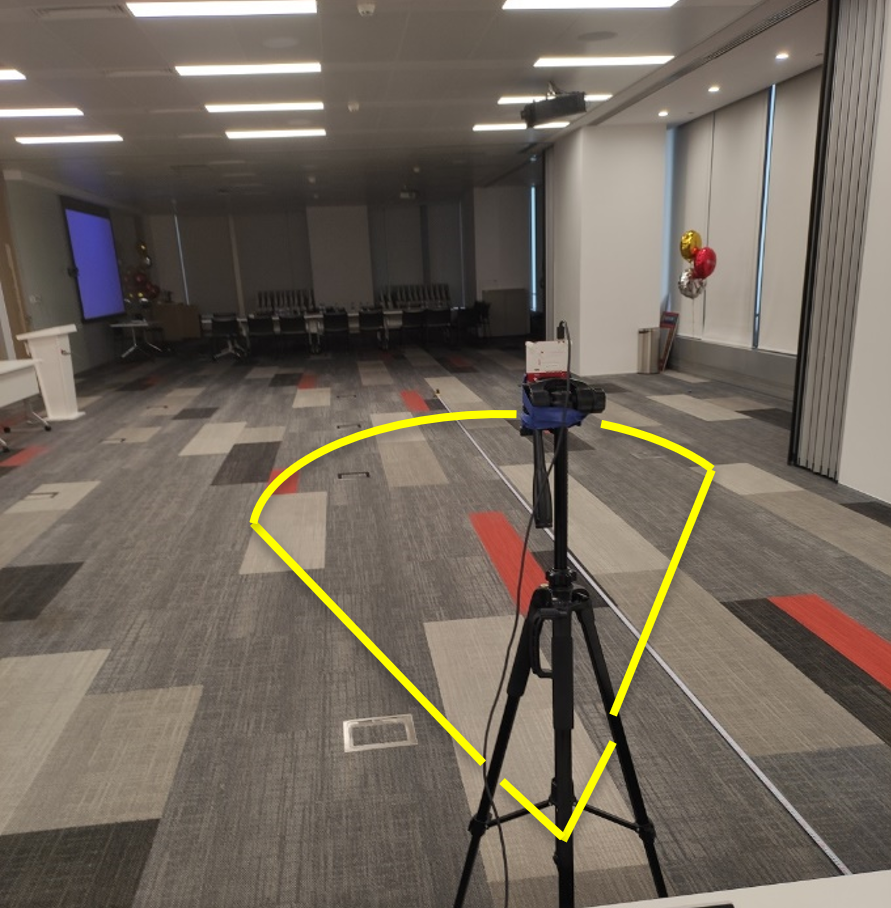SLAAEF6 September 2023 MSPM0L1105 , MSPM0L1106 , MSPM0L1306 , MSPM0L1344 , MSPM0L1345 , MSPM0L1346
4.2 Detection Performance
In order to test the range of the MSPM0 PIR motion detector, the device was positioned at the end of a hallway on a tripod. An adult would walk side-to-side at set distances at approximately 1 m/s, and the resulting absolute value of the signal would be analyzed. The threshold for the digital output code to detect motion was set to 30. The motion detector could reliably detect motion at the beginning 5 m range, and could detect with less sensitivity out to 9 m under the set test conditions. These result could be further optimized with further software development and possibly the use of different PIR lenses.
 Figure 4-2 MSPM0 PIR Motion Test Setup
Example
Figure 4-2 MSPM0 PIR Motion Test Setup
Example